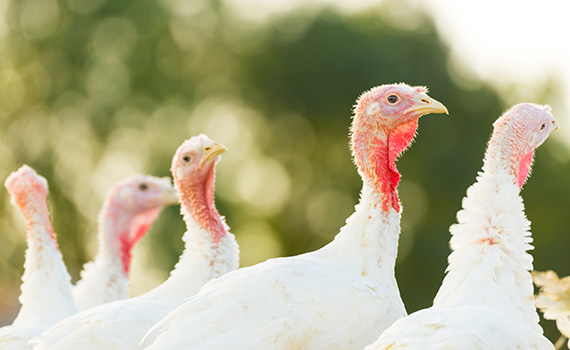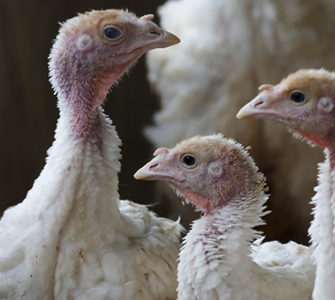Lack of approved medications continues to stymie welfare-minded turkey producers
Another year, another survey and more long faces on US turkey producers frustrated by the lack of approved, efficacious medications — a problem they rated as the top health issue threatening production.
The dearth of approved medications continues to exacerbate the prevalence of several diseases in turkeys, said Steven Clark, DVM, a poultry veterinarian with Devenish Nutrition who has conducted the survey for the past 18 years.
“The turkey industry needs diagnostics, effective and approved treatments and therapeutics, and nutritional alternative research to address turkey-disease challenges,” Clark told Poultry Health Today.
Colibacillosis, a disease causing both respiratory and enteric infections, ranked as the second leading health concern for turkey producers, behind the lack of approved drugs.
The withdrawal of the New Animal Drug Application for enrofloxacin leaves the industry vulnerable to colibacillosis as well as to other diseases like fowl cholera, Clark said. Ornithobacterium rhinotracheale (ORT), coccidiosis and clostridial dermatitis (CD) rounded out the top-five list of issues (see the accompanying list).
ORT, coccoidiosis see increase in rankings as cellulitis falls
For the second consecutive year, ORT, a highly contagious respiratory disease, ranked No. 3. It’s risen on the list in recent years; it ranked No. 7 in 2015 and No. 4 in 2016. More research is needed to better understand this disease and options to control it, Clark said.
In 2016, coccidiosis ranked No. 13. It rocketed to No. 6 the following year and moved up two additional spots this year. This jump in coccidiosis likely reflects the growth of no-antibiotics-ever (NAE) production schemes, which further limits the number of medications available.
In these programs, producers cannot use ionophores, a class of animal-specific antibiotics used for many years to manage the parasitic disease. Instead, NAE producers must rely on non-ionophore anticoccidials and live vaccines to help prevent the costly disease. Phytonutrients and other alternatives have been used to improve immunity and intestinal health and some have purported activity against coccidia, but they are generally not as consistent or as efficacious.
CD or cellulitis, which affects turkeys in all geographic regions and is commonly seen in male market-age commercial birds, dropped one spot to number No. 5 this year. It was number No. 3 on the list in 2016 and No. 2 from 2008-2015.
Clinical signs of cellulitis include vesicles on the skin, especially on the breast area, and moist, dark and wrinkled skin near the breast area and also around the tail. Researchers have varying opinions about the cause and risk factors of cellulitis. Methods of control include early recognition, medicating affected birds with antimicrobials, prompt removal of mortality, quickly managing all water spills and wet litter and not composting litter within 200 feet of the poultry barn.
Steep rises in number of some reported ailments
Several ailments saw big jumps in the numbers reported. For example, respondents reported 183 cases of turkey coronavirus, which is a highly infectious gastrointestinal disease, up from 12 cases in 2017 and six the previous year. In contrast, there were 119 cases reported in 2015, 43 in 2014 and 420 in 2013.
Turkey reovirus digital flexor tendon rupture (TD-DFTR), which was recognized as a newly emerging disease in 2011, also saw a spike, from 182 cases in 2017 to 234 this year. There were 31 cases in 2016. Clinical signs of TD-DFTR in older birds could include lameness and abnormal gait. Incidents of aortic rupture and poor flock performance are also common. Interestingly, TD-DFTR ranked No. 17 in 2018 and No. 11 in 2017 despite the rise in numbers.
And the number of reported cases of blackhead, also known as histomoniasis, rose from 109 the previous year to 127. But blackhead, which results in significant mortality in turkeys, fell from No. 8 the previous year to No. 11. Nitarsone, a medication for blackhead, was withdrawn from the market in December 2015, leaving the industry with no approved medication to fight the disease, the report says. The industry encourages more research on blackhead disease.

Posted on November 20, 2018














